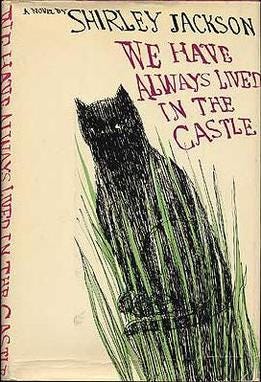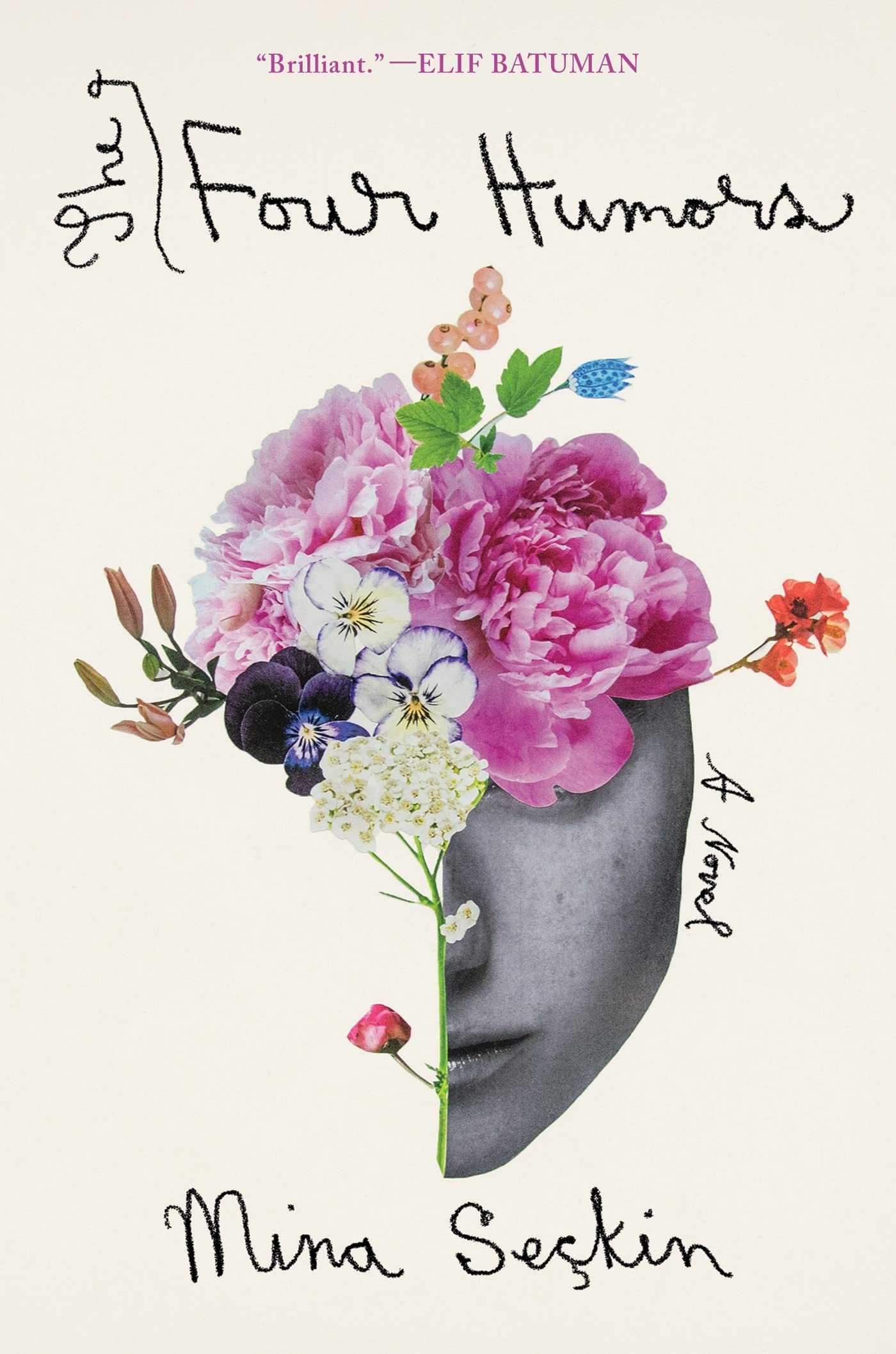Book Recs for Wasting Away
Every novel that came to mind last month when I got a sunburn that was so bad.
Alienated Young Woman publishes book recommendations, reading diaries, and semi-regular reviews of fiction, TV, and film. Subscribe for free to receive new recommendations in your inbox twice a month.
My aunts and uncles live in a town that doesn’t feel real. Three hours south of our megalopolis hometown, on an island entirely golf-cart navigable, where existence is shaped by the idea of vacation even for non-vacationers. Rows of beach cottages bleed into beach mansions that bleed into beach RVs. Everywhere, seashells for sale. Something about being there in late March—before the summer flock descends, when the spring breakers have long since cleared out and the winter Texans are making other plans—feels like breaking a divine rule. Like occupying a liminal dimension where everyone, regardless of age, is a retiree.
Like Bellerophon, I was punished for my curiosity. Less than 48 hours into my stay on the island, I removed my coverup after a 65-degree, cloudy day to find the remnants of a trickster god’s cruel prank. Spreading over my limbs in twisting, illogical patterns was a sunburn unlike anything that had ever permeated my skin. I had been hubristic in my beach venture, and now I was wasting away.
In a Cortizone-10-assisted recovery fugue, I couldn’t help but draw the similarities between my own sun-related misfortune and my favorite 19th-century Gothic heroines, whose stories take place in the confinement of some deceptively sprawling estate. Jane Austen’s Catherine Morland, Charlotte Brontë’s Jane Eyre,1 Wilkie Collins’ titular woman in white, and later, Daphne du Maurier’s Mrs. de Winter, or even Ellen Hutter in Nosferatu, Robert Eggers’ cinematic tribute to the Gothic.
Three weeks later, neither memory nor mark has left my body. Two nights ago, I burned my hand catching a falling pan from the oven and barely registered the sensation. But I still struggle to bend my left knee past 90 degrees without pre-applying aloe. So now, I’m thinking about physical rot.
In literature, rot is often employed for the same Gothic motives as confinement. In Charlotte Perkins Gilman’s iconic 1892 short story “The Yellow Wallpaper,” physical illness gives way to confinement that, in turn, gives way to madness. In Edgar Allan Poe’s “The Fall of the House of Usher,” claustrophobic castles and fragile bodies crumble together, unable to cope with a changing world.
In more recent memory, I’ve written rather extensively about Kat Dunn’s new novel, Hungerstone. Dunn’s reimagining of Carmilla borrows elements from Collins and Gilman to flesh out a new protagonist for the classic vampire story, Lenore, who is locked away in a dilapidated mansion and succumbing to a mysterious illness when she meets the iconic vampire. As it turns out, this intersection of physical decay and bedridden confinement is exactly what it feels like to live out the three-week process of a lingering sunburn. The evidence of my curious, almost surreal encounter with the elements has faded, but its phantom lingers. I want to return to my Gothic heroines and their physical and/or geographical rot. Maybe you do, too.
Rebecca by Daphne du Maurier (Little, Brown & Co., originally published 1938)
Is there any literary setting more confining than Rebecca’s Manderley, or any protagonist more confined? Manderley is haunted, that much is certain. But it’s not a ghost that drives Rebecca’s unnamed narrator to madness; it’s the isolation, the sprawling but constantly empty manor where she’s tried in vain to make a life in the shadow of death. Twenty-one and alone, our narrator seems to enter a dream when she meets the charming, enigmatic Maxim de Winter, a 40-year-old aristocratic widower. Within days, she leaves behind a meager existence to become the lady of Manderley, Maxim’s lavish family estate. But soon after moving in, she realizes the memory of Maxim’s first wife, beloved socialite Rebecca, has yet to move out.
Manderley is as much a character in Rebecca as Hill House is in Jackson’s The Haunting of Hill House or The Overlook in The Shining. It’s at once idyllic and arresting, holding profound isolation in the same rooms that entertain hundreds of guests, unwitting of its dark history. Its grounds seem to extend forever, but somehow place inescapable restrictions on the women who inhabit them. At Manderley, our narrator’s whirlwind love story—and her sense of self—evaporate into the claustrophobic walls, and reemerge as a twisted maze of lies, betrayal, and regret. The secrets of the de Winter dynasty and its extravagant estate may be long-buried, but in time, they demand to be dug back up.
We Have Always Lived in the Castle by Shirley Jackson (Penguin Classics, originally published 1962)
Shirley Jackson was the master of confinement. The mother superior of domestic horror carved herself a crater in the American literary canon with claustrophobic, lingering stories that somehow made New England college towns feel more isolated than the crumbling European estates of her Gothic predecessors.
If Poe’s “The Fall of the House of Usher” was an obituary for the dying aristocracy, Jackson’s novels are rueful elegies for the 20th-century nuclear family. Ghosts, demons, and monsters—real, imagined, or worst of all, human—creep behind the veneer of WASP contentment. Parents murder children and vice versa. Houses come to life. The border between dreamscape and reality thins until it shatters. Her characters’ way of life is slowly but surely dying out, and Jackson is their acerbic steward to the beyond.
In We Have Always Lived in the Castle, two sisters loom large over their small town. It’s been nearly a decade since their parents, whose business employed most of their neighbors, dropped dead during a curious family dinner. Now isolated in their decaying family estate, Merricat, Constance, and their bedridden Uncle Julian live under the cold eye of suspicion. They’re pariahs in a town that believes Constance a murderer, Merricat her accomplice.
Then Charles, their distant metropolitan cousin, arrives for an unexpected stay, contaminating the girls’ fragile existence. To Constance, he’s an antidote, carrying her ticket out of a cold, rapidly decomposing way of life. To Merricat—the novel’s bewitching, duplicitous narrator—he’s a parasite, brazenly eroding the peace she’s so carefully negotiated for herself and her sister. One way or another, they’ll have to cut out the rot.
The Four Humors by Mina Seçkin (Catapult, 2021)
One of my favorite Agatha Christie mysteries is The Moving Finger, about an injured pilot begrudgingly recovering in a quaint English village under his sister’s care when he stumbles into a village-wide conspiracy. The relatively obscure Miss Marple story has an unexpected contemporary counterpart in The Four Humors, not as murderous but just as enigmatic. Set in Istanbul, The Four Humors follows Turkish-American college student Selin through one bleary summer when, while grieving her father’s sudden death and seeking treatment for chronic migraines, she uncovers an earth-shattering collection of family secrets.
Labyrinthine and multigenerational, with a hijacked format that interweaves Sibel’s contemporary journey with her grandmother’s decades-old secrets, it’s already a twist on the alienated young woman genre.2 But what burrowed The Four Humors into my memory was Seçkin’s use of physical confines. A protagonist whose medical condition keeps her anchored to a small radius finds, in her limited setting, an entire world of unknowns. Sibel’s family may begin the novel sprawling and diasporic, but centuries of history—political and medical, intimate and close-kept, unspoken and dangerous—seem to brew just under the floorboards of her grandmother’s small apartment.
Mexican Gothic by Silvia Moreno-Garcia (Random House, 2020)
Disclaimer: This is a novel about rot, but it’s also still one about being confined to the labyrinthine rooms of a dilapidated foreign estate. It’s a pastiche of Gothic horror, where that sort of experience is the centerpiece.
Set in 1950s Mexico City, Mexican Gothic sees young socialite Noemí leave her pampered cosmopolitan life for the remote Doyle estate. Isolated in the mountains, the lady of the estate—Noemí’s beloved cousin, Catalina—fears she’s being slowly poisoned by her husband, Virgil, heir to the Doyle fortune. But buried beneath the Doyle castle are secrets worse than anything the cousins could have imagined—with inbreeding, vain attempts at immortality, nefarious mushroom spores, and a lot of rotting flesh to boot. Part The Woman in White, part Crimson Peak, Moreno-Garcia’s take on Gothic horror honors the beats of early sci-fi and Victorian sensation, with a dose of stomach-churning magic only she could concoct.
Dreaming of You by Melissa Lozada-Oliva (Astra House, 2021)
What happens if you don’t treat a sunburn? Evidently, the same thing that happens if you irresponsibly resurrect Tejana icon Selena Quintanilla in a vain attempt to reconnect with your own identity as a Latina artist: the skin starts peeling from your body in waves.3
Candelaria author Melissa Lozada-Oliva’s debut novel, written as a series of narrative poems, is a visceral, often gross künstlerroman about a writer at the end of her rope, who finds that tugging on another woman’s doesn’t offer the release she seeks. When struggling poet Melissa employs a shady ritual to resurrect her idol, the Greek chorus of chismosas that occupy her thoughts in the form of first-person plural interludes (one of Lozada-Oliva’s stronger literary choices) tries to warn her that doing so won’t get her any closer to self-actualization. But some lessons can only be learned by losing skin.
Our Wives Under the Sea by Julia Armfield (Picador, 2022)
I’m glad we’re on the topic of peeling skin. The physical rot that occurs in Our Wives Under the Sea—starting when one character’s body parts quite literally wash away in the bath—is perhaps the most striking image in Julia Armfield’s debut novel. But it’s hardly the most haunting. If Shirley Jackson was the master of confinement, Armfield is slowly emerging as the master of wasting away. In this novel (and later, in Private Rites), Armfield’s characters are long gone to each other well before the haunting moments when their bodies slip away. They fade in a long, impossible stretch, then disappear in an instant. Memory is everlasting, death instantaneous.
So Armfield’s novels are less about outright rot, more about a gradual peeling away. In Our Wives Under the Sea, the stretched-out fading belongs to marine biologist Leah, whose three-day deep-sea expedition becomes six months at the bottom of the ocean. When she finally returns, it’s hard to know if any of the old Leah is left at all. Eventually, her physical body is no longer quite tangible; swaths of skin and entire appendages melt off painlessly in the water, taking memories of her and her wife’s past lives with them out to sea.
But Armfield’s are also novels about caretaking. The center of Our Wives Under the Sea is not Leah—whose possibly-supernatural deep-sea discovery may seem more interesting on the surface—but her wife, Miri, a social worker whose entire life is upended first when Leah disappears, then again when she returns. Leah’s story is otherworldly, but Miri’s is a profoundly human tale of grief, a perpetual search for answers where none exist, and eventually, of letting go.
Honorable Mention: A Book That Feels Like a Sunburn
Brutes by Dizz Tate (Catapult, 2023)
Brutes is a curious child, nearly visceral enough to fall into the “rot” category and claustrophobic enough to file under “confinement.” But its defining trait is something else: Brutes is swampy and rank. Set in small-town Florida the summer 14-year-old Sammy, a beloved preacher’s daughter, abruptly disappears, Brutes centers on a mystery while refusing to hit the beats of a mystery novel. Instead, it’s a story of obsession.
Rather than follow Sammy, Tate follows the Greek chorus of middle school girls to whom Sammy is less friend than deity. They obsess over her femininity and maturity with insatiable desire, cataloging every element of her with such precision that they’d be invaluable detectives in the search for Sammy, if anyone bothered to ask. Instead, in the confines of their hot, sticky Southern summer, the girls’ precarious methods of coping with adolescence, grief, and small-town despair feel almost divine—or at least not of this world. (Think Yellowjackets, if the forest were a dilapidated hometown, or The Virgin Suicides, if the boys were an even more obsessive cult of middle school girls).
Like a true sunburn, Brutes singes, then stings, then peels apart the hurt. The girls are so intertwined they’re barely distinguishable as teens, then hauntingly individual as adults. They are the only town residents who seem to have noticed the uncanny, possibly sinister presence in the long-polluted lake. They are 13-year-old girls, and thus long used to going ignored. They may have been the key to finding Sammy all along—but that may not matter at all.
Thanks for reading Alienated Young Woman! If you’ve enjoyed this post, consider sharing it on your socials. Subscribers receive two free reading guides per month.
Collage by the author.
And later, Jean Rhys’ Antoinette in the Jane Eyre reimagining, Wide Sargasso Sea.
Fun Fact: My 2022 interview with author Mina Seçkin is actually where I first heard the term!
In other words, Dreaming of You is a gory satire-fable about worship, fandom, sanctified cultural icons, friendship, betrayal, regret, and resurrection. Happy Good Friday!
















